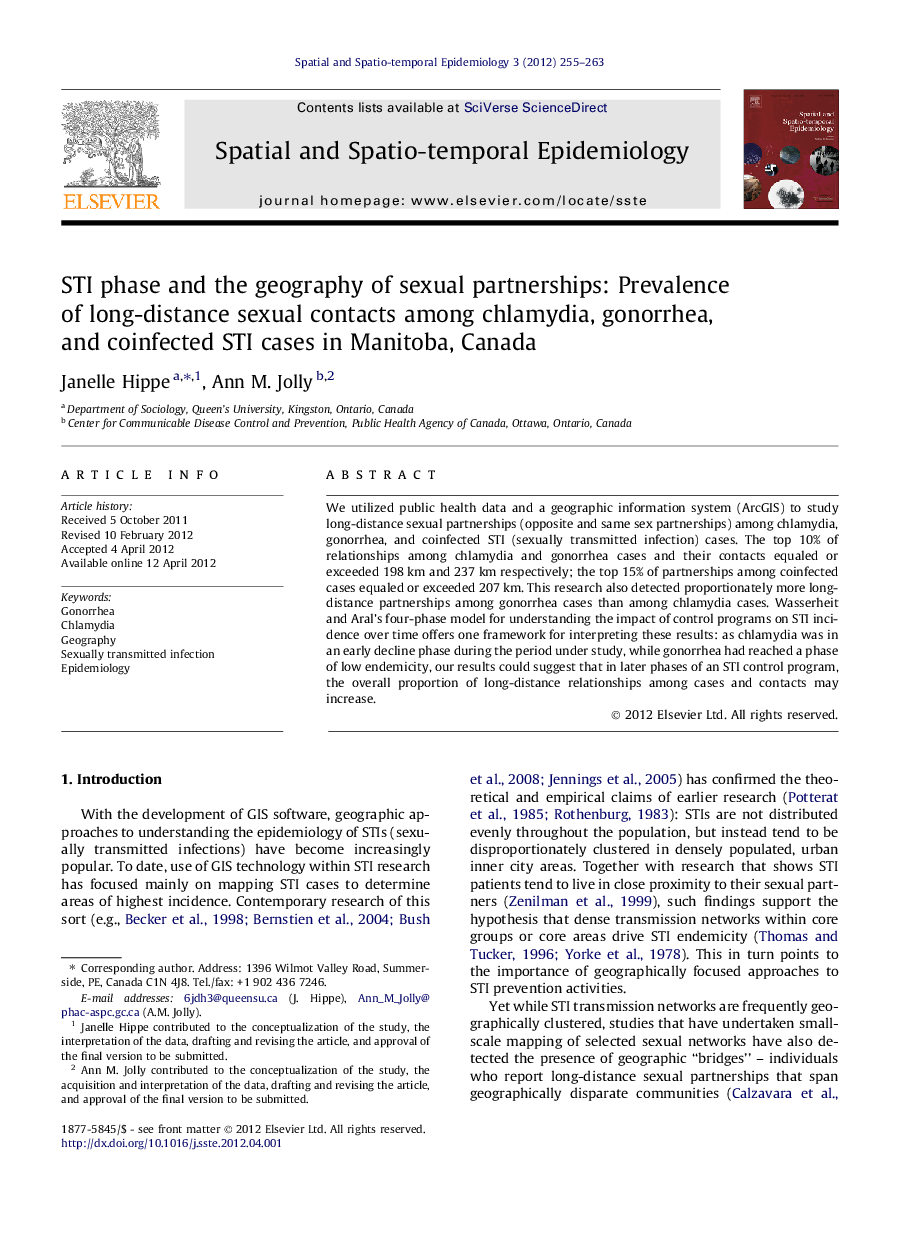| Article ID | Journal | Published Year | Pages | File Type |
|---|---|---|---|---|
| 1064426 | Spatial and Spatio-temporal Epidemiology | 2012 | 9 Pages |
We utilized public health data and a geographic information system (ArcGIS) to study long-distance sexual partnerships (opposite and same sex partnerships) among chlamydia, gonorrhea, and coinfected STI (sexually transmitted infection) cases. The top 10% of relationships among chlamydia and gonorrhea cases and their contacts equaled or exceeded 198 km and 237 km respectively; the top 15% of partnerships among coinfected cases equaled or exceeded 207 km. This research also detected proportionately more long-distance partnerships among gonorrhea cases than among chlamydia cases. Wasserheit and Aral’s four-phase model for understanding the impact of control programs on STI incidence over time offers one framework for interpreting these results: as chlamydia was in an early decline phase during the period under study, while gonorrhea had reached a phase of low endemicity, our results could suggest that in later phases of an STI control program, the overall proportion of long-distance relationships among cases and contacts may increase.
► A sizable minority of STI clients report long-distance sexual relationships. ► Long-distance sexual relationships can contribute to STI endemicity. ► Long-distance relationships among STI clients may increase in later STI phases. ► Approaches to STI control should facilitate ease of contact-tracing between jurisdictions.
